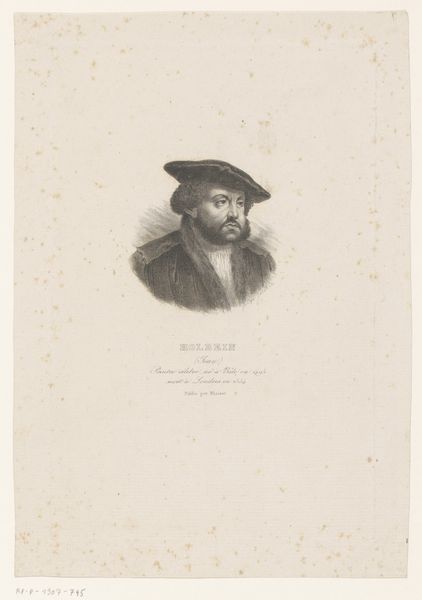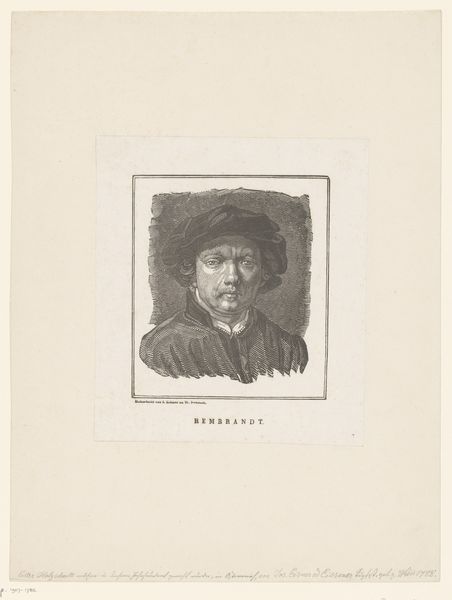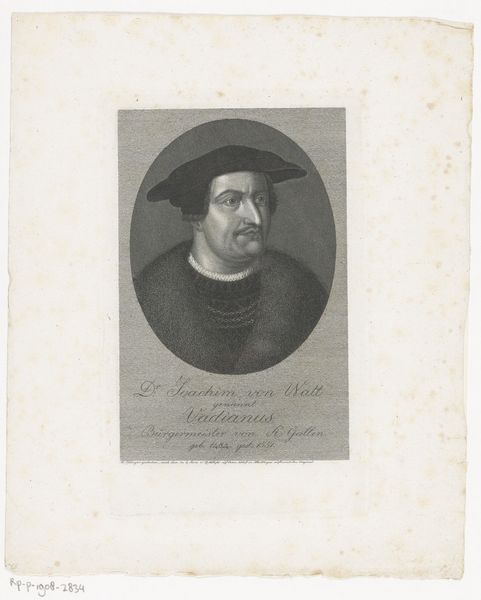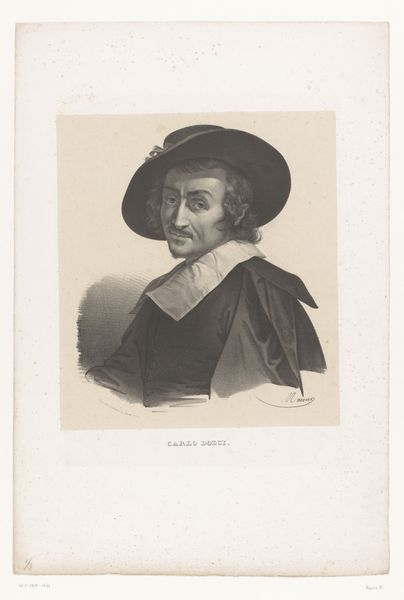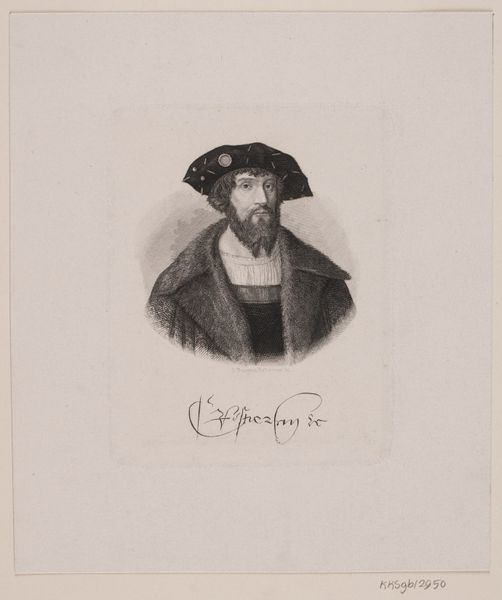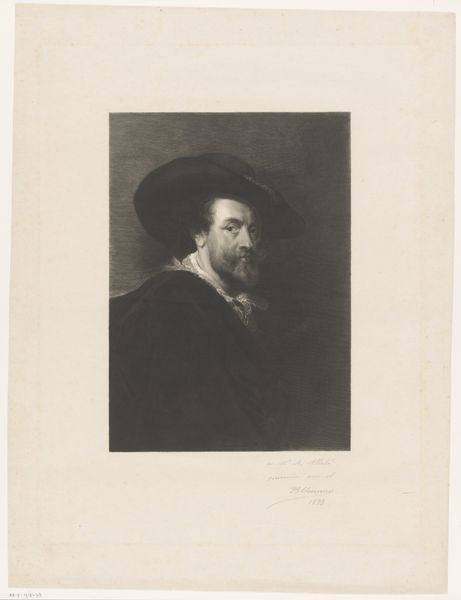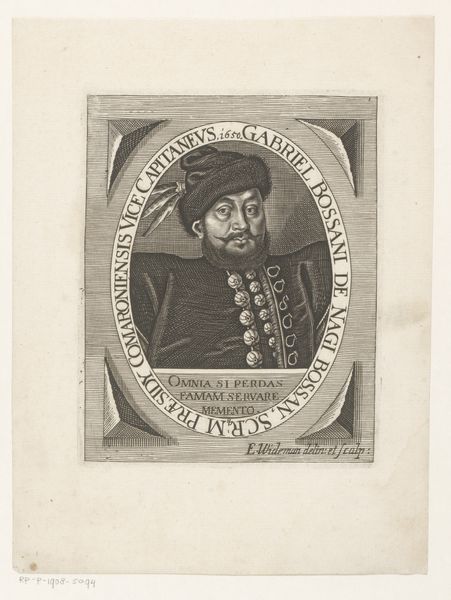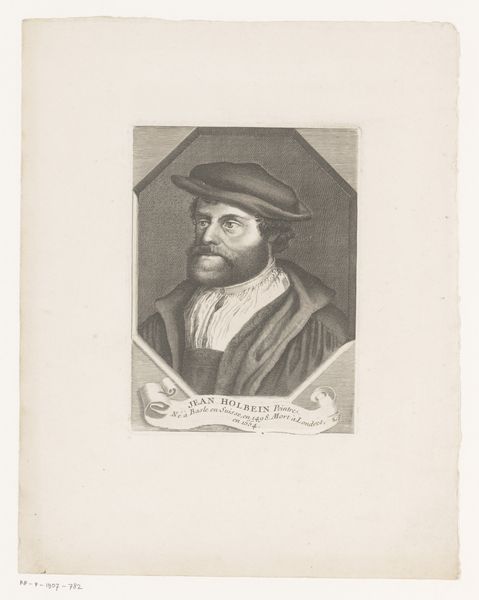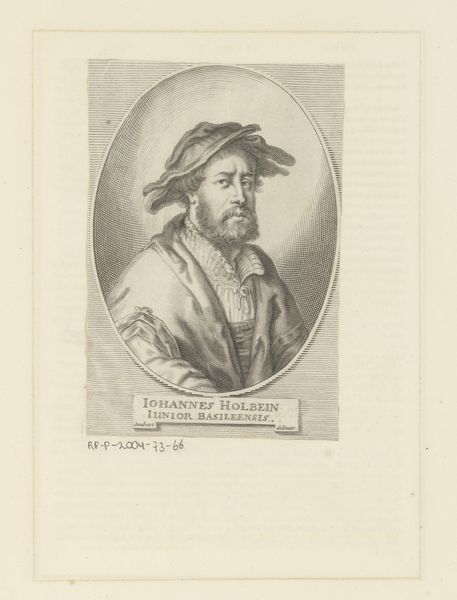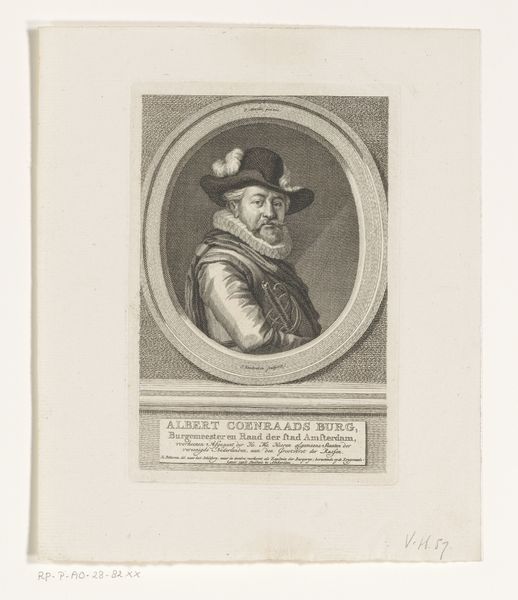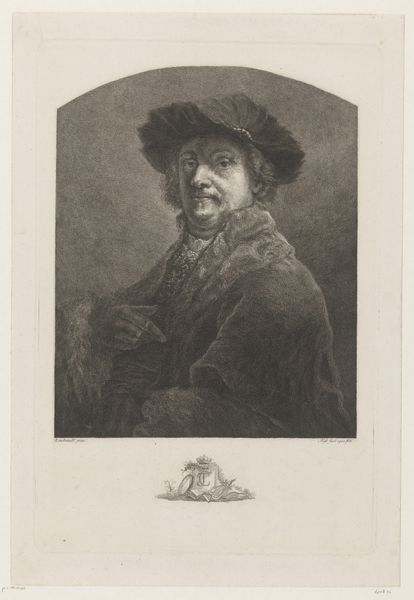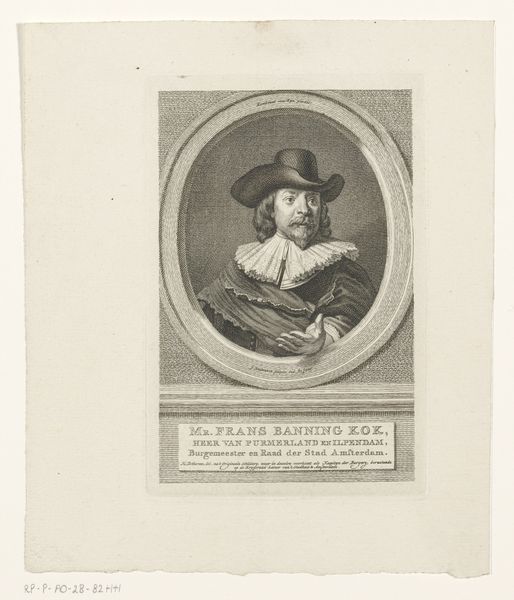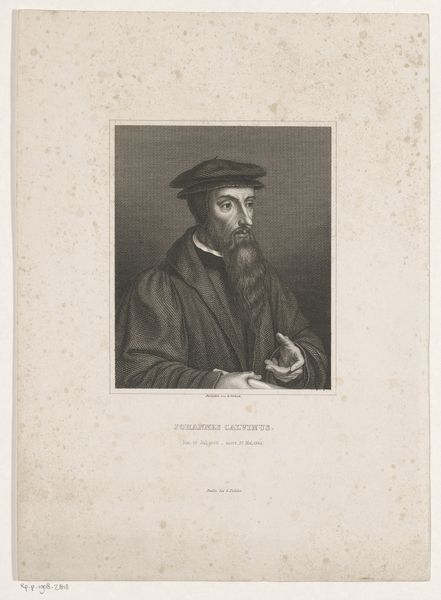
drawing, print, engraving
#
portrait
#
drawing
#
neoclacissism
# print
#
engraving
Dimensions: height 500 mm, width 336 mm
Copyright: Rijks Museum: Open Domain
Editor: Here we have "Portret van Hans Holbein (II)" by Jean-Baptiste Mauzaisse, dating from around 1820 to 1830. It's an engraving, currently held at the Rijksmuseum. I'm struck by how contained and deliberate the shading is – it really defines the figure. What do you see in this print? Curator: Formally, it is an intriguing study in chiaroscuro. Observe the strategic placement of light and shadow, not just to delineate form, but to create a tonal balance that guides the viewer’s eye. Notice how the artist has used a meticulous network of fine lines to suggest volume and texture, especially in the rendering of the fur collar and the subject’s face. What effect does this level of detail create? Editor: It definitely adds a sense of realism, almost tangible, and that detailed rendering really does guide my eye around the image. Is there anything in the composition that stands out to you? Curator: Absolutely. The artist’s careful control of line weight directs the viewer's focus toward Holbein’s face, creating a focal point around his gaze. It suggests a psychological depth. Consider the precision evident in the line work itself. How does the engraver's mastery of the medium contribute to the overall impact of the portrait? Editor: It’s clear that technical skill elevates the print from mere reproduction to something artful and captivating in its own right. I’ve never thought so closely about how an engraver uses line weight like that to direct my focus before! Curator: Indeed. By analyzing these elements, we gain insight into not just the likeness of the subject but also the artistic choices that imbue the work with meaning and visual interest. The very materiality of the engraving serves to bring our perception of light into sharper focus, creating contrast where before there was merely plane. Editor: I hadn't appreciated how much formal analysis could reveal about a work like this. It's given me a completely new lens through which to view portraiture!
Comments
No comments
Be the first to comment and join the conversation on the ultimate creative platform.
